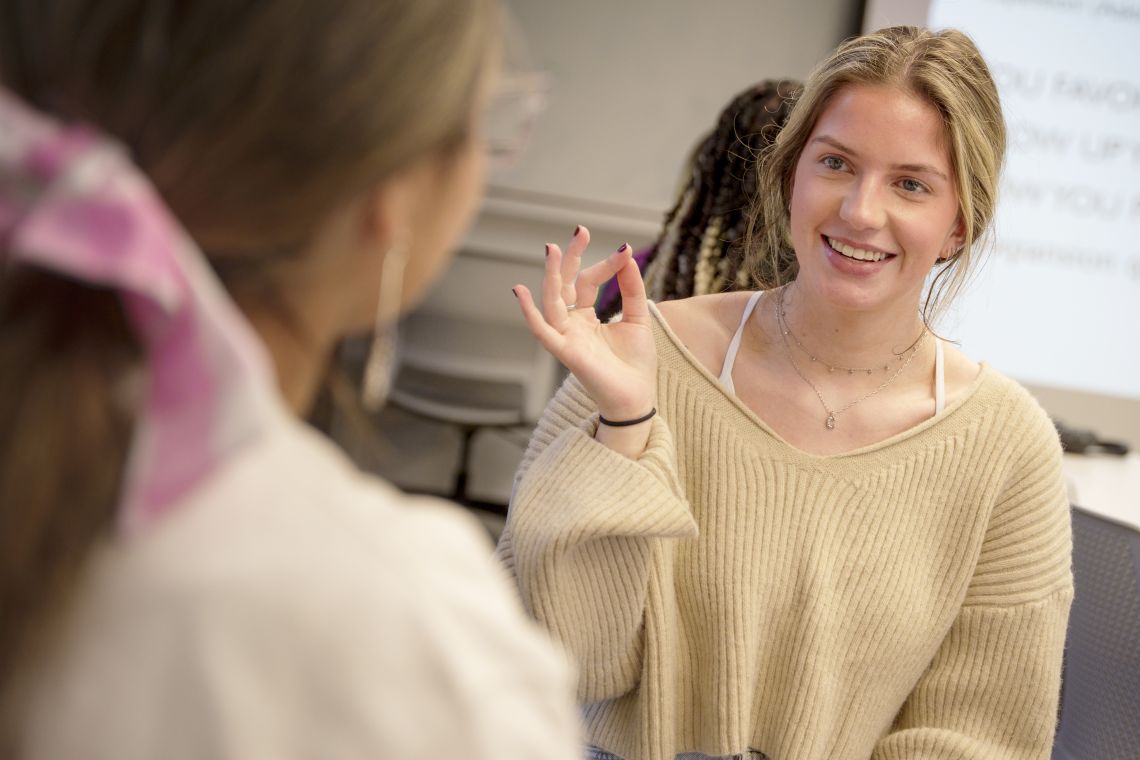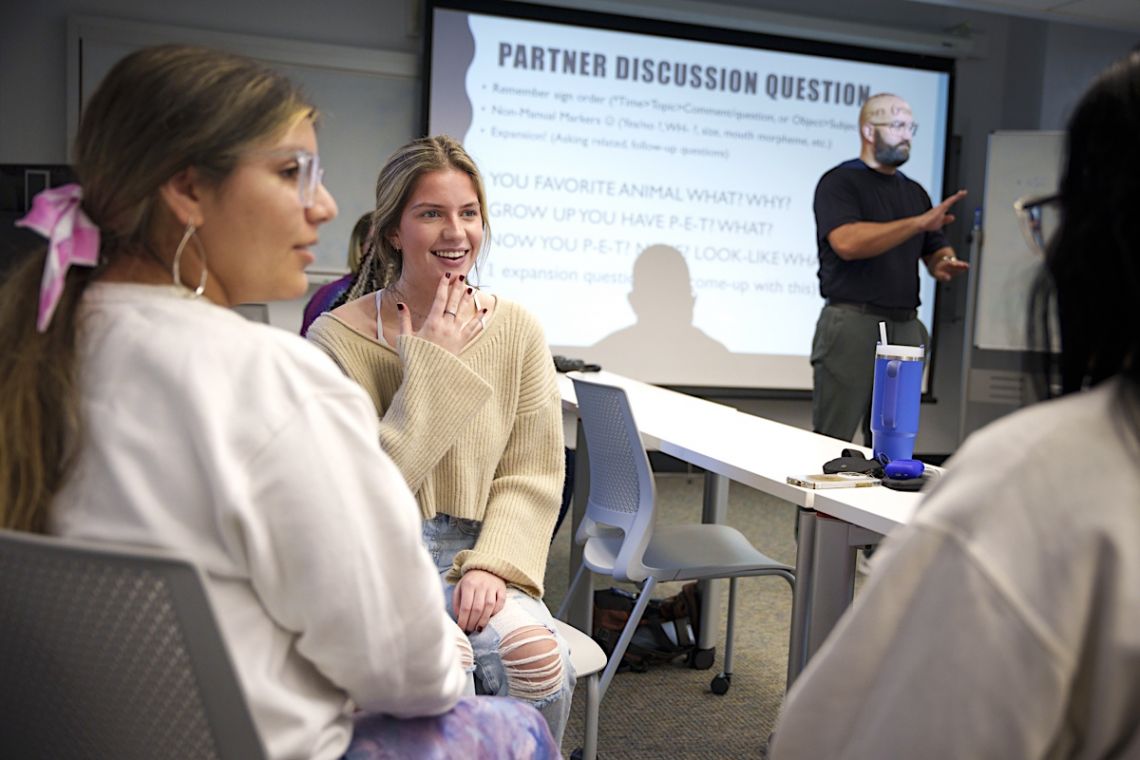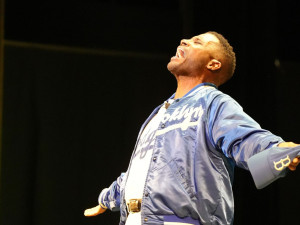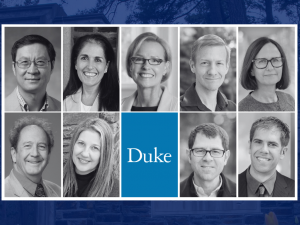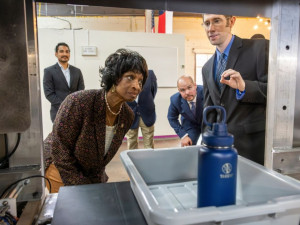Language in Three Dimensions
In a cozy West Campus classroom, students sit engrossed in lively conversations about family pets. Occasionally, a light hand clap or trill of soft laughter escapes, but the steady hum of the HVAC system remains the loudest sound in the room. Silently, instructor Kraig Klingenberg brings the group activity to a close and seamlessly begins to introduce new vocabulary to the attentive undergrads in the latest language offering at Duke: American Sign Language (ASL).
Although the first ASL course debuted Fall 2024, advocacy for American Sign Language occupies a long history on campus. “Duke has had an ASL Club since the early 1990s, so there has definitely been a strong student interest that precedes this newest addition to Trinity’s language options,” explains Luciana Fellin, professor of the practice in the Department of Romance Studies and chair of the Trinity Language Council.
When she first became chair of the Trinity Language Council, one of Fellin’s top priorities was to get an ASL course on the books. “Duke values and champions inclusivity, so offering American Sign Language naturally reflects those efforts,” she explains.
It’s safe to say the students agree. Interest in ASL 101 was so great that the fall class filled almost immediately, with a double-digit waitlist. Fellin adds that ASL also satisfies Trinity’s language requirements, and she is hoping that Trinity will steadily grow the program to include 300-level classes.
As the third most-taught language in the United States, American Sign Language is often mistaken as merely a visual representation of English. However, Fellin emphasizes that ASL is a distinct natural language that offers benefits beyond standard language learning. Because of the use of hand movements to communicate, ASL provides an accessible alternative for those students who might find the oral modality of speaking and listening difficult to master.
“American Sign Language truly produces language in three dimensions,” she shares. “Hand movements, facial expressions and spatial orientations convey meaning while introducing new culture and cognition — and students learn to move differently in the world while acquiring a new expressive mode.”
Klingenberg adds that in the classroom, students share an immersive “hands in the air” experience that is completely interactive instead of lecture based. He also conveys the rich culture of the d/Deaf and hard-of-hearing communities, including Durham and the greater Triangle area. “Students need to understand the culture of any language they study so they can gain a deeper understanding and appreciation of it, and ASL is no different in that regard,” he said.
To that end, Klingenberg wants to build relationships within Durham’s d/Deaf community by working with Duke’s ASL Club to organize outreach events and guest speakers, appreciating the ASL Club as an asset to Duke. “The club brings the work students do in the classroom out into the greater deaf communities in the area.”
Some of Klingenberg’s students were already involved in the ASL community before taking the course. First involved with disability activism as a high school student in India, Athmika Kirshnan helped launch the Hidden Disabilities Sunflower program at Bangalore International Airport. At Duke, the sophomore majors in Evolutionary Anthropology with a Spanish minor and is on the pre-med track. She hopes to become a pediatrician and continues to be active in the ASL community.
Prior to taking Duke’s new language offering, she had entertained the thought of enrolling in ASL courses at Durham Tech, but the lack of reliable transportation tabled that thought — and then she found the ASL Club. Whether hosting certified interpreters on campus to provide the Duke community with language instruction, leading house courses or organizing outreach events like Signing 101, Kirshnan identified with the student-led club’s ability to foster spaces that bring the hearing and d/Deaf communities together.
While Krishnan enjoys the challenges that come with learning the vocabulary and grammar of ASL, she is quick to acknowledge the unexpected benefits. American Sign Language has helped her facilitate connections with a culture and a community that she wouldn't have met otherwise.
“Between my language course and my work with ASL Club, I’m so mindful that I’m stepping into someone else’s world,” she says.
ASL 201 and 101 are planned for Fall 2025. ASL 202 and 102 are planned for Spring 2026, and so on, to stay synchronous.


